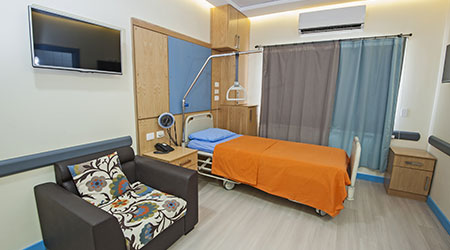Have you noticed that the pieces of hospital equipment most likely to spread infection are very difficult, if not impossible, to disinfect? Environmental services managers need to ask and answer many critical questions regarding each surface material crews must clean. Among them are:
- What will it take to clean this surface?
- Can it be cleaned with the products the facility is using?
- Has it been tested to verify hospital-grade disinfectants can be used without causing damage?
- How often will it need to be cleaned and disinfected to reduce bioburden and prevent cross-contamination?
- Will the use of ultraviolet (UV) light cause damage, such as cracking or discoloration of plastic?
All in the timing
Can each surface be cleaned and disinfected effectively in the timeframe set for completing that task? The typical response from a manufacturer is, “Yes, you can use anything to clean all surfaces.” Clearly, this is not the case. For example, not all surfaces of a bed can be effectively cleaned and disinfected the same way. Further questioning often reveals a lack of understanding of infection-prevention protocols and cleaning and disinfection products that are used at different times and in different situations.
Among the important characteristics of surfaces in healthcare settings related to infection prevention are these:
- Ease of maintenance and repair
- Torn fabrics allow for entry of microorganisms and cannot be properly cleaned or disinfected.
- Items that are scratched or chipped allow for accumulation of microorganisms and are more difficult to clean and disinfect.
- Seamlessness.
- Resilience and impact resistance.
- Non-toxic and non-allergenic.
- Surface porosity. Microorganisms can survive on porous fabrics, such as cotton, cotton terry, nylon, and polyester, as well as on plastics, such as polyurethane and polypropylene.
- Porous upholstered furniture and furnishings should not be used in care areas, particularly where immunocompromised patients are located.
- Absence of seams because they might trap bacteria and are difficult areas to clean.
- Cleanability:
- Furnishings, walls, and equipment must be able to withstand cleaning and be compatible with all five families of disinfectants.
- Upholstered furniture in care areas must be covered with fabrics that are fluid-resistant, non-porous and can withstand cleaning and hospital-grade disinfectants.
Following instructions
It also is extremely important to request and understand manufacturer cleaning and disinfection instructions. Surface materials often come with warnings about using cleaning and disinfection products commonly used in healthcare facilities. Unfortunately, this information is often not documented properly, and the knowledge is not passed down to those in charge of processing the furniture, furnishings, or equipment.
Points to remember:
1. The environmental services professional has one disinfectant on the cleaning cart.
2. When a sporicide is necessary due to hospital isolation protocols, a second, more potentially corrosive disinfectant might be necessarily employed.
3. If UV light is used for terminal room disinfection, that must be factored into the durability of furniture, furnishings, and equipment.
4. Furniture, furnishings, and equipment must withstand all chemical and non-chemical methods of disinfection.
J. Darrel Hicks, BA, MESRE, CHESP, Certificate of Mastery in Infection Prevention, is the past president of the Healthcare Surfaces Institute. Hicks is nationally recognized as a subject matter expert in infection prevention and control as it relates to cleaning. He is the owner and principal of Safe, Clean and Disinfected. His enterprise specializes in B2B consulting, webinar presentations, seminars and facility consulting services related to cleaning and disinfection. He can be reached at darrel@darrelhicks.com, or learn more at www.darrelhicks.com.

 Building Sustainable Healthcare for an Aging Population
Building Sustainable Healthcare for an Aging Population Froedtert ThedaCare Announces Opening of ThedaCare Medical Center-Oshkosh
Froedtert ThedaCare Announces Opening of ThedaCare Medical Center-Oshkosh Touchmark Acquires The Hacienda at Georgetown Senior Living Facility
Touchmark Acquires The Hacienda at Georgetown Senior Living Facility Contaminants Under Foot: A Closer Look at Patient Room Floors
Contaminants Under Foot: A Closer Look at Patient Room Floors Power Outages Largely Driven by Extreme Weather Events
Power Outages Largely Driven by Extreme Weather Events